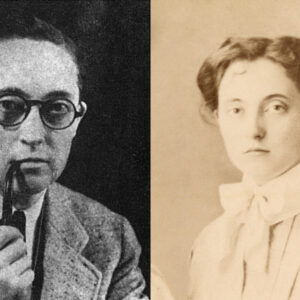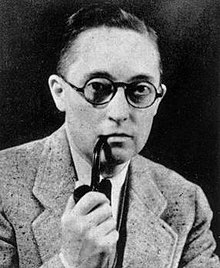CW: Transphobia, homophobia, conversion therapy.

Hi everyone! To finish up this month’s LGBT Scientists in History, today we’re going to be highlighting Alan L Hart, a medical doctor who was responsible in the reduction of tuberculosis (TB) cases and was one of the first people to have gender affirming surgery.
Alan Hart (born Alberta Hart) was born in 1890 in Kansas, but moved to Oregon in 1892 following the death of his father, and eventually ended up on his grandfather’s farm. During this time, Hart was free to present as male, even if his mother disagreed with her son’s “desire to be a boy” at first. Hart’s grandparent’s obituaries list him as a grandson and were mostly supportive of his gender expression, and Hart did the traditional “masculine” tasks and farm work.
In 1902, Hart and his family moved to Albany, where Hart had to present as a girl to attend school, and was treated as such. However, during his time at school, he was allowed to write under the name “Robert Allen Bamford Jr.”, given that it was common for writers to use pseudonyms at the time. He often wrote in newspapers under this name, or by simply “A. Hart”, only using his legal name when under pressure to do so from elders.
After graduating from school, Hart attended Albany college and enrolled at the University of Oregon Medical school, still presenting as a woman, where he was the first woman the receive the Saylor medal in recognition of his achievements. During this time, it became apparent that Hart was attracted to women, considered unnatural at the time. He started seeking psychiatric help, to try and ‘cure’ his homosexuality, and as with all conversion therapy, was doomed to fail. This ‘therapy’ is documented in the 1920 study “Homosexuality and its treatment”, by J. Allen Gilbert.

Hart had asked Gilbert to perform a hysterectomy on him, to remove the possibility of getting pregnant, presenting eugenic arguments to do so. It could be argued that this could also be a way for Hart’s relationships to be seen as heterosexual, in the way that he did. Gilbert eventually conceded to perform the operation, having noted that Hart “was intelligent and not mentally ill”, had accepted that Hart only ever experienced himself as a man, and that this as the only way for Hart to have as happy an existence as possible”. The surgery was performed over the 1917-1918 winter holiday period, with Hart legally changing his name afterwards and was reported to be “happier…than I have ever in my life and I will continue this way as long as I live”.
However, things were not all rosy after his medical transition, firstly being outed as trans forced Hart and his wife Inez to move from Oregon to Montana and had lost his job during the 1920 depression. During this time, his marriage became strained and Inez left Alan in in 1923, ordering him to have no contact with her afterwards. The divorce was official in 1925.
At this point, Hart moved to Trudeau School of Tuberculosis in New York, and gained a Master’s in radiology from University of Pennsylvania in 1928. During his time in New York, Hart met his second wife Edna Ruddick; the relationship would last until Hart’s death. In 1929 he was appointed Director of Radiology at Tacoma General Hospital, and was hired by the Idaho Tuberculosis Association in 1937.
X-rays were a relatively new discovery at this point, having only been discovered in 1895, and Hart was interested in using them for detecting TB, one of the biggest killers in America at the time. It was found that early x-ray machines could detect the disease early on in infection before symptoms became apparent. By doing this, it became possible to treat infections early, saving patients lives. During this time, Hart and Edna moved around rural Idaho, lecturing and conducting mass TB screening, treating the effects of the epidemic. A keen writer, Hart had written throughout all his life, writing novels and short stories. He capitalised on this experience, writing for many medical advice journals on how to treat TB, and gained another masters degree in 1948, this time in public health.
After this, the Alan and Edna moved to Connecticut, where they stayed for the rest of Hart’s life, when we hied in 1962 of heart failure. On his death, Hart directed that he be cremated, and his personal letters and photographs destroyed, to try and control the interpretation of his life. After Alan’s death, Edna established a fund into leukaemia research, the disease which killed Hart’s mother. The Alan L Hart and Edna Ruddick Hart Fund makes grants for leukaemia research.
The charity we’re highlighting this week is Mermaids, supporting transgender, non-binary and gender-diverse young people, by giving families resources to help navigate their lives and reducing isolation for the young people. If you’d like to donate to them, you can do so here.
And that’s it! Thank you for walking down history lane with us this LGBT history month.
